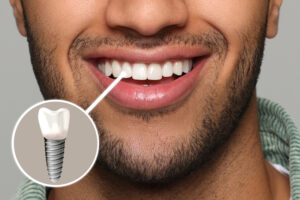Managing Pain After a Root Canal: Effective Strategies for Relief
Undergoing a root canal can be disconcerting, but it’s often the best option to save a damaged tooth and alleviate pain. While the procedure is designed to remove the source of discomfort, it’s normal to experience soreness afterward. Proper pain management is essential for a smooth recovery and ensuring you can return to your daily activities. At Smile Design Dentistry, we prioritize your well-being, offering guidance on effective strategies to heal quickly and comfortably.
Types of Pain After a Root Canal
- Post-Procedure Pain: Occurs soon after the root canal due to the manipulation of tissues surrounding the treated tooth. It’s typically described as mild to moderate soreness that lasts for a few days as the area heals.
- Inflammatory Pain: This pain arises from the body’s natural response to the procedure, where tissues around the tooth become inflamed. It is often throbbing and can be managed with anti-inflammatory medications.
- Nerve Pain: Occurs when the nerves in the surrounding areas are irritated. The pain can be sharp and shooting, and while it subsides as the nerves settle, it may require pain management strategies.
- Referred Pain: Felt in areas other than the treated tooth, often in the surrounding teeth or jaw. This can happen due to nerve pathways, and while it can be confusing, it typically resolves as the treated area heals.
- Persistent Pain: Lingers beyond the typical healing period, often indicating the underlying issue has not been resolved. A dentist should assess this type of pain to rule out complications or the need for further treatment.
- Pain from Infection: If an infection develops after the root canal, it can cause intense, throbbing pain. This requires prompt medical attention, as it may indicate the infection has not been cleared or that bacteria have invaded the area.
Tips on Managing Pain After A Root Canal
Managing pain after a root canal is crucial for a smooth recovery and can be achieved through a combination of medications, home care practices, and professional guidance. Here’s an overview of the most effective pain management options:
- Over-the-Counter Pain Relievers: Ibuprofen or acetaminophen alleviates mild to moderate pain. Ibuprofen, in particular, is an anti-inflammatory that reduces swelling and discomfort. Follow dosage instructions and consult your dentist if you have concerns or pre-existing conditions.
- Prescription Medications: In cases where over-the-counter medications aren’t sufficient, your dentist may prescribe more potent pain relievers or anti-inflammatory drugs. These medications are used for short-term relief and should be taken as directed to avoid side effects or dependency.
- Cold Compresses: Applying a cold compress to the outside of your cheek near the treated tooth can reduce swelling, providing temporary relief. This method is most effective within 24 to 48 hours after the procedure and should be used in 15-20-minute intervals.
- Saltwater Rinses: A warm saltwater rinse can soothe irritated tissues and keep the area clean, which may reduce pain and prevent infection. Mix half a teaspoon of salt in a glass of warm water, swish it around for about 30 seconds, then spit it out.
- Soft Diet: Avoiding hard, crunchy, or chewy foods can prevent unnecessary pressure on the treated tooth, reducing pain and allowing the area to heal. Foods like yogurt, smoothies, mashed potatoes, and soup are good options during recovery.
- Elevating Your Head While Sleeping: Keeping your head elevated while sleeping can reduce blood flow to the affected area, decreasing throbbing and swelling. An extra pillow or sleeping in a reclined position can also improve your comfort level.
- Avoiding Tobacco and Alcohol: Smoking and alcohol can irritate the gums and delay the healing process, exacerbating pain and increasing the risk of complications. It’s advisable to avoid these substances until you’ve fully recovered.
- Follow-Up Appointments: Attending follow-ups at Smile Design Dentistry is essential to ensure your recovery is on track. Your dentist can assess the healing process, address concerns, and provide additional treatments to manage persistent or severe pain.
- Mindfulness and Relaxation Techniques: Stress and anxiety can exacerbate pain perception. Mindfulness, deep breathing exercises, or other relaxation techniques can help you manage discomfort and promote well-being.
- Combining These Options: Easing discomfort following a root canal and ensuring a smooth recovery process requires combining these options. Always consult your dentist before starting a new treatment or if you experience persistent or worsening pain.
Healing and Recovery Time
The healing and recovery time after a root canal depends on the complexity of the procedure, the tooth’s location, and your health. Generally, you can expect the following timeline:
- Immediate Post-Procedure: Most clients experience mild to moderate soreness for the first few days. This is when your body is healing the treated area, and over-the-counter pain relievers can manage discomfort.
- First Week: By the end of the first week, the soreness should diminish. Swelling should also subside, although some sensitivity may persist.
- 2 to 4 Weeks: For most individuals, the tooth and surrounding tissues continue to heal. Remaining sensitivity should resolve, and you can resume regular eating habits.
- Complete Healing: While the discomfort resolves within a few weeks, complete healing of the internal structures can take several months. During this time, your dentist will monitor the healing progress through follow-up visits.
Tips for Reducing Discomfort
In addition to standard pain management strategies, several other tips can reduce discomfort and promote healing after a root canal:
- Use an Oral Irrigator: An oral irrigator can clean around the treated tooth, reducing irritation without the mechanical action of brushing.
- Apply a Warm Compress: After the initial 48 hours, a warm compress can relax the muscles around the jaw, relieving tension that might contribute to discomfort.
- Avoid Grinding or Clenching: If you grind or clench your teeth, consider using a mouthguard or practicing relaxation techniques to avoid putting pressure on the treated tooth.
- Stay Hydrated: Drinking water can flush out toxins and bacteria, keep your mouth clean, and promote healing.
- Maintain Oral Hygiene: Continue brushing and flossing, but do so gently around the treated area. Consider using a soft-bristled toothbrush during recovery.
Signs of Infection
After a root canal, monitoring for signs of infection is essential, as this can indicate bacteria have persisted or re-entered the treated area. Below are some common signs of infection:
- Severe or Worsening Pain: While some discomfort is normal, pain that intensifies or persists beyond a few days could indicate an infection.
- Swelling and Redness: If you notice significant swelling in your gums, face, or jaw.
- Pus or Discharge: The presence of pus or a foul-tasting discharge near the treated tooth requires immediate dental attention.
- Fever: A spike in body temperature might signal an infection, mainly if it occurs alongside other symptoms.
- Tender Lymph Nodes: Swollen and tender lymph nodes can be a response to an infection spreading from the treated tooth.
- Persistent Bad Breath: Bad breath or a constant bad taste, even after brushing, can indicate bacteria are still present in the treated area.
When to Contact Your Dentist
To prevent complications and ensure a smooth recovery after a root canal procedure, it is important to contact Smile Design Dentistry if you experience severe or prolonged pain, as this could indicate an underlying issue. Additionally, signs of infection such as fever, swelling, redness, pus, or persistent bad breath require immediate attention. If the treated tooth becomes cracked, chipped, or feels unstable, seeing your dentist promptly can prevent further damage. Persistent numbness beyond the expected recovery period may suggest nerve damage, while allergic reactions to prescribed medications, such as itching, rash, or difficulty breathing, necessitate contacting your dentist or seeking medical help.
Avoiding Further Dental Issues
Maintaining excellent oral hygiene is crucial. Brush at least twice a day with fluoride toothpaste and floss daily. A soft-bristled toothbrush is recommended, especially after a root canal, as it can avoid irritation.
The diet also plays a significant role in dental health. Limiting sugary and acidic foods and drinks can reduce the risk of cavities and enamel erosion. It’s also wise to avoid sticky or hard foods, notably if the tooth has not yet been restored with a crown. Getting a protective crown is often necessary for a root canal-treated tooth. Discuss the appropriate timing for this restoration with your dentist.
If you grind your teeth, a condition known as bruxism, a mouthguard can shield from excessive wear and potential fractures. This is vital for teeth that have undergone a root canal. Quitting smoking is another critical step, as smoking can delay healing, increase the risk of complications, and contribute to gum disease and oral cancers. Last, dental checkups are essential. These visits allow your dentist to monitor the health of the treated tooth and detect potential issues.
Follow-Up Care and Observations
After a root canal, follow-up care is crucial to ensure the tooth heals properly and address possible issues. Here’s what to keep in mind:
- Attend Scheduled Follow-Up Visits: Your dentist will schedule one or more follow-ups. These visits are important for assessing the healing process and ensuring the root canal treatment has been successful.
- Monitor for Symptoms: Mild discomfort is normal, but if you have severe or worsening pain, swelling, or other unusual symptoms, contact your dentist.
- Temporary Filling Care: If the tooth has been temporarily filled, avoid chewing on that side until a permanent restoration, like a crown, is placed. This prevents damage to the tooth and the filling.
- Permanent Restoration: Schedule the placement of a permanent crown or other restoration. This step is essential to ensure the tooth’s long-term durability and restore full function.
- Maintain Open Communication: If you experience prolonged pain, sensitivity, swelling, or fever, contact your dentist at once. Intervention can prevent complications and ensure a smoother recovery.
- Observe Long-Term Healing: Even after the initial recovery period, monitor the treated tooth for discomfort or changes. Staying vigilant and maintaining regular dental visits is crucial in addressing concerns as they arise.
In Conclusion
Managing pain after a root canal is essential to the healing process, ensuring you return to your activities with minimal discomfort. By understanding the types of pain that may arise and utilizing effective pain management strategies, you can ease the recovery. It’s also important to recognize the signs of infection, follow proper aftercare guidelines, and maintain open communication with your dentist.
Smile Design Dentistry provides comprehensive care before, during, and after your root canal treatment. Our team ensures your comfort and guides you through every step of the recovery process. If you have concerns or experience unusual symptoms, please contact us. Your oral health and well-being are our priorities.




